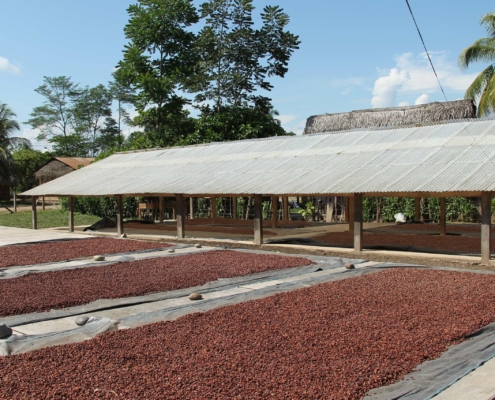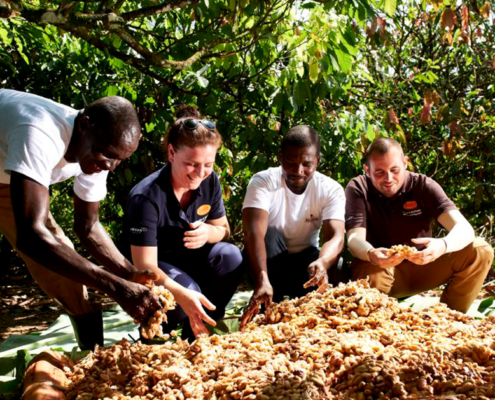The challenge: clear-cutting of primeval forests and rainforests
The most profitable type of cocoa farming over the short term is a monoculture on freshly cleared primeval forest or rainforest land. This is extremely damaging to the environment: biodiversity is lost, large amounts of fertilizers and chemical pesticides have to be used, and at some point, the soil is depleted, which leads to the clearing of further forested areas. The wood logged on such lands is in high demand, as it can be used as free firewood or sold as valuable high-quality lumber. Monocultures have been the default practice for decades, and any knowledge of better alternatives is often lacking. Another disadvantage of this practice is that it makes the farm reliant on a single source of revenue. A failed harvest means a sharp drop in its income.
Our approach: agroforestry and Good Agricultural Practice (GAP)
Monocultures are avoidable, as the alternatives deliver higher total yields over the long term: diversified agroforestry combined with Good Agricultural Practice (GAP). On cocoa farms, this means the use of suitable plant varieties, the proper use of shading from additional trees, the maintenance and improvement of soil fertility by natural means, environmentally friendly weed and pest control, and restorative post-harvest practices. Mixed cultivation with other crops, like bananas, papaya, or cassava, provides additional income and is complemented by sustainably grown trees for lumber.
As a result, it isn’t necessary to create new fields or fell trees in adjacent areas for lumber. The implementation of these practices is achieved through the development and transfer of knowledge in the communities and on the farms, regarding questions such as: How can the stock of cocoa trees continuously be rejuvenated? Which seedlings should be selected? How do cocoa trees have to be pruned? Which crops thrive in particular, and what additional functions do they have—for example, do they provide shade or improve the soil?


